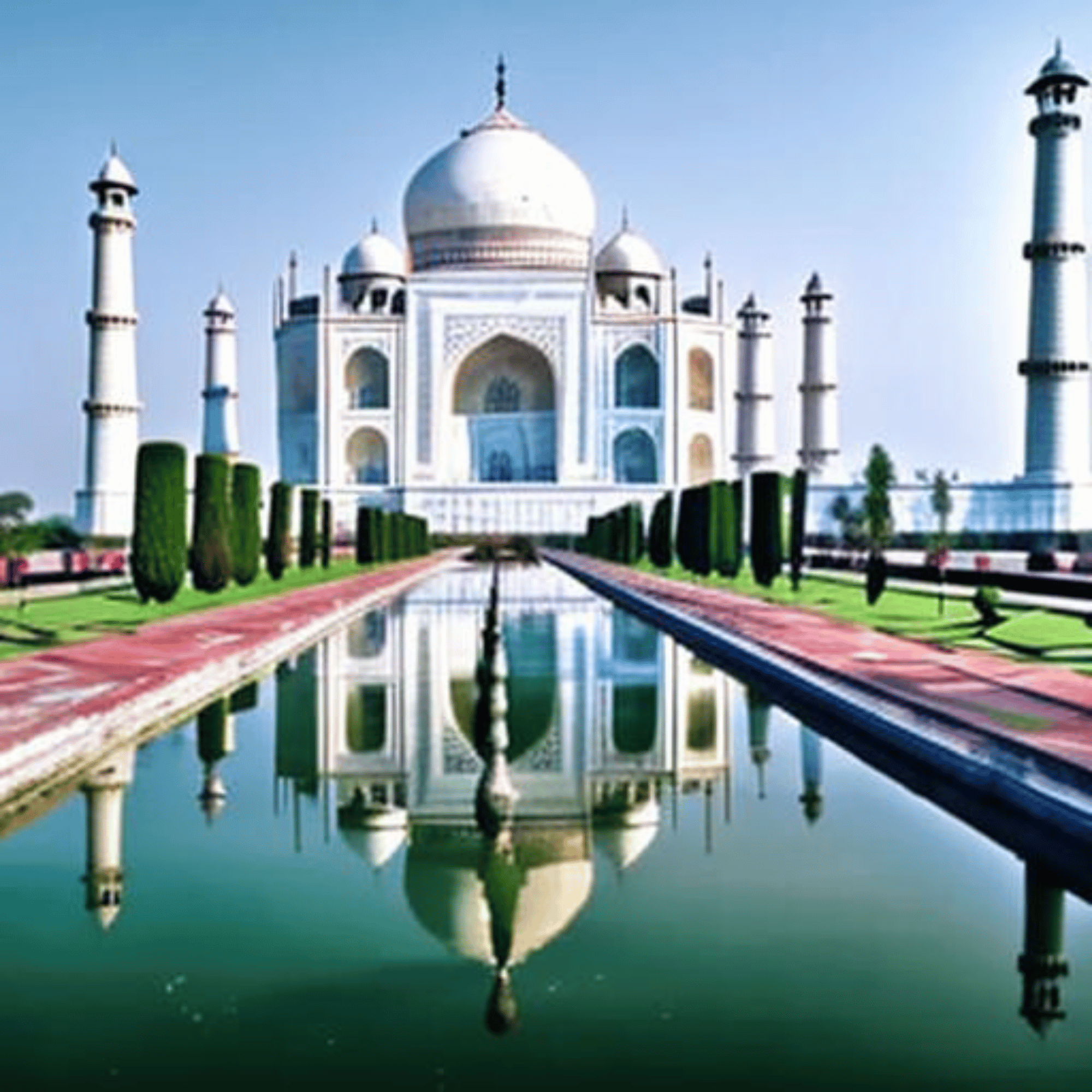The Taj Mahal, a world-renowned icon of India, is a magnificent and awe-inspiring structure that has captivated the hearts of millions of people around the globe. This stunning mausoleum, located in the city of Agra, is considered one of the world’s most beautiful and romantic buildings, and its breathtaking beauty and incredible history have made it a must-see destination for travelers from all over the world.
Aesthetic Features of the Taj Mahal:
The Taj Mahal is renowned for its stunning aesthetic features, which are a true testament to the incredible craftsmanship of the Mughal architects and artisans who built it. The following are some of the most remarkable aesthetic features of the Taj Mahal:
Architecture: The Taj Mahal’s architecture is a perfect blend of Indian, Persian, and Islamic architectural styles. The mausoleum’s symmetrical design, with its four minarets and central dome, is a masterpiece of Mughal architecture.
Materials used: The Taj Mahal was built using a range of materials, including white marble, red sandstone, and precious stones. The marble used in the construction of the Taj Mahal is considered one of the purest and most beautiful in the world.
Color and Decorations: The Taj Mahal is adorned with intricate carvings, calligraphy, and beautiful floral patterns. The delicate floral designs that decorate the walls and ceilings of the mausoleum are particularly stunning, and the use of precious stones and gold leaf adds an element of luxury and sophistication to the overall design.
Symbolism of the Taj Mahal:
The Taj Mahal is rich in symbolism, both Islamic and Hindu. The following are some of the most significant symbols associated with the Taj Mahal:
Islamic Symbolism: The Taj Mahal’s symmetrical design is a symbol of Islamic architecture, which emphasizes balance and harmony. The calligraphy that adorns the walls of the mausoleum is also a significant symbol of Islamic art.
Hindu Symbolism: The use of lotus motifs in the Taj Mahal’s design is a nod to Hindu symbolism. The lotus is a symbol of purity and divinity in Hindu culture, and its use in the Taj Mahal’s design is a tribute to the emperor’s Hindu heritage.
Historical Significance of the Taj Mahal:
The Taj Mahal’s historical significance cannot be overstated. The following are some of the most significant historical events associated with the Taj Mahal:
Origin of the Taj Mahal: The Taj Mahal was built by the Mughal Emperor Shah Jahan in memory of his beloved wife, Mumtaz Mahal. The construction of the Taj Mahal began in 1632 and was completed in 1653.
Mughal Emperor Shah Jahan: Shah Jahan was one of the greatest Mughal emperors, and his reign is considered the golden age of Mughal architecture and art. The Taj Mahal is perhaps his greatest legacy, and it stands as a testament to his love for his wife and his dedication to creating beautiful and lasting works of art.
Influence on Other Buildings: The Taj Mahal has had a profound influence on other buildings around the world, particularly on Islamic architecture. The symmetrical design and use of white marble have been emulated in many other buildings, both in India and around the world.
Cultural Significance of the Taj Mahal:
The Taj Mahal is not only a historical monument but also a cultural icon of India. The following are some of the most significant cultural aspects associated with the Taj Mahal:
Symbol of Love and Devotion: The Taj Mahal is a symbol of love and devotion, and it has inspired countless poets, writers, and artists over the centuries. The Taj Mahal is considered one of the most romantic buildings in the world, and its beauty has inspired many stories and legends.
Place of Pilgrimage: The Taj Mahal is also a place of pilgrimage for many people in India, particularly for those who are in love or seeking a partner. It is believed that visiting the Taj Mahal can bring good luck and prosperity in love.
Conclusion:
The Taj Mahal is a remarkable monument that stands as a testament to the incredible skill and creativity of the Mughal architects and artisans who built it. Its stunning beauty, rich history, and cultural significance make it a must-see destination for anyone visiting India. The Taj Mahal is a symbol of love, devotion, and artistic excellence, and it is a testament to the enduring power of human creativity and ingenuity. If you ever have the opportunity to visit India, be sure to visit the Taj Mahal and experience its majestic beauty for yourself.





